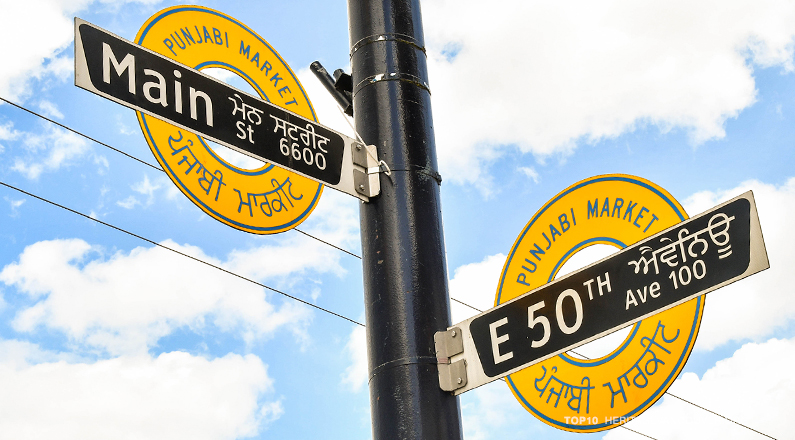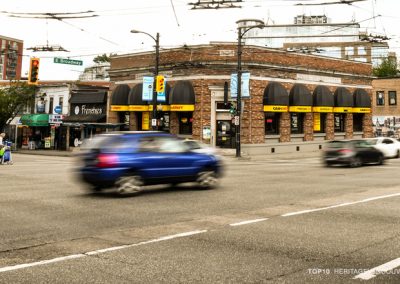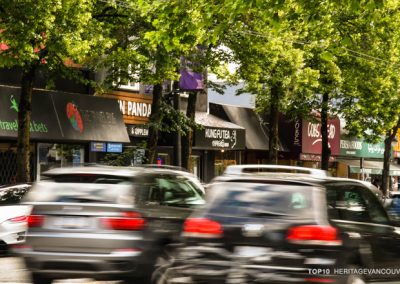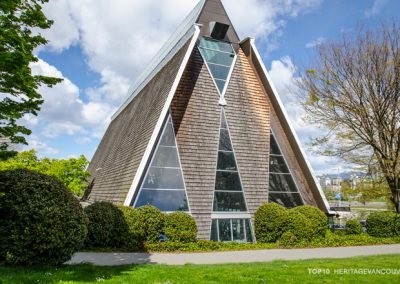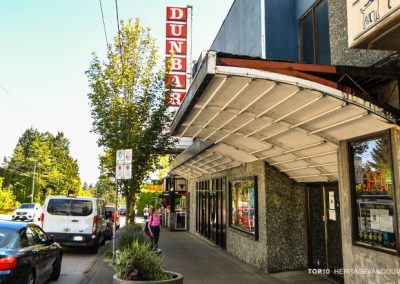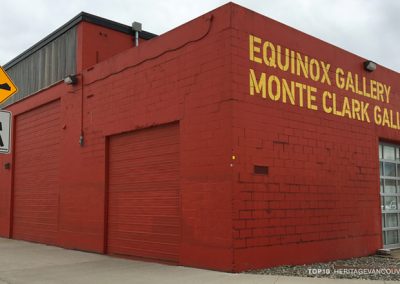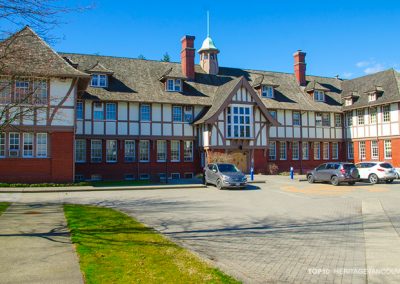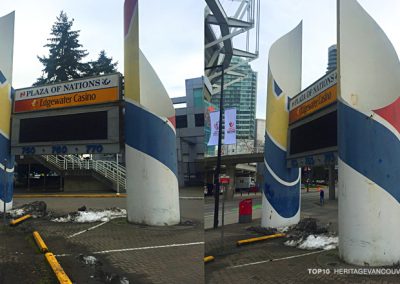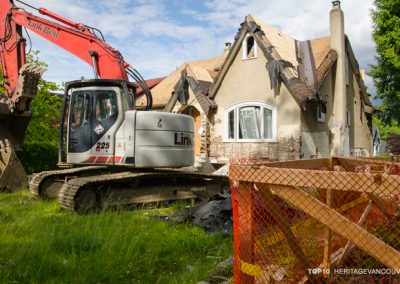*Heritage Vancouver would like to thank the Punjabi Market Association and the crew of volunteers and community members for assisting us in writing this paper. Specifically, Dajlit Sidhu uncle (co-founder of the PMA), Toor uncle (co-founder of PMA), Pall Beesla (Board Member, Khalsa Diwan Society), Seema Aunty and Gulzar Nanda (Jewelers in Punjabi Market), Ajay Puri (community organizer for Punjabi Market) and volunteers Aneesha Grewal, Abhishek Gupta, and Suparna Gupta.
Punjabi Market is the first and largest South Asian market outside of South Asia. This commercial district stretches along Main Street from 48th Avenue to 51st Avenue in the Sunset neighbourhood.
The first South Asian shop opened on the strip on May 31, 1970 and 2020 will mark the 50th anniversary of the Market. In its heyday, during the 1980’s and 90’s, there were over 300 shops in this area and the market was full of people walking, shopping and gathering. Punjabi Market was also the first place in the world (outside of South Asia) to have Punjabi on street signs. Furthermore, Vancouver hosted the first and largest Vaisakhi celebration outside of Punjab. The Vaisakhi parade winds its way through the community each spring and is one of Vancouver’s largest annual event – where over thousands of people gather and participate every year. 2018 marked the 41st annual Nagar Kirtan, which is a Sikh custom of singing hymns in procession and honoring the birth of the religion.
Despite these achievements, businesses started leaving and closing up shop in the Market in the mid-2000s and the area’s vitality started to wane. Nonetheless, there is a strong desire by members of the Punjabi Market community to revitalize this area in a manner that honours the rich history and its context.
Threat
Punjabi Market is regarded as an important area with a number of directions to be considered in order to strengthen its character in the City of Vancouver Sunset Community Vision document.
A rezoning application for 6505, 6507 and 6541 Main Street at the Southwest corner of Main and 49th Avenue (the corner which was the original location of All India Sweets) resulted in the City of Vancouver citing in its Policy Report for the rezoning application made to Vancouver City Council in February of 2016, “significant public interest was expressed regarding the commercial vibrancy of the shopping area.” The same report indicates a number of opportunities for revitalization through rezoning for larger developments and residential intensification.
New development certainly can help with the transformation of the area, but the revitalization strategy and new developments need to take into account the context of the Market and neighbourhood. The strategy for development and changes in the neighbourhood needs to go beyond commemorative plaques, public art and murals, and beautification of the area.
Without more substantial measures that address experiences and the types of shops, the special qualities that define the Market are at risk and Punjabi Market is vulnerable to losing it’s unique value to the area and City at large.
Most recently, it has been pointed out that the new Tim Hortons that has moved into the Southwest corner of Main and 49th, as part of the rezoning of 6505, 6507 and 6541 Main Street has made vulnerable the cafe across the street, which in many respects, appears to exemplify a small business that has adapted to the local context. This development is noted in the aforementioned report as “enhancing the public realm and commercial vibrancy of the area.
Significance
The Punjabi Market shopping area is an area with historic significance and present-day importance. It is an invaluable part of the city’s diverse history, culture and commercial identity. A once thriving commercial node, this area is currently experiencing economic decline and a lack of vibrancy. Today, South Asian shops still have a presence in the Punjabi Market, but in recent years many businesses have closed or relocated.
At its peak, Vancouver’s Punjabi Market had over 300 shops, including 24 jewelry stores, 36 clothing and fabric stores, 20 restaurants and grocery stores and was a thriving, bustling neighbourhood filled with economic and community activity. The restaurants and shops were well frequented by locals and tourists wanting to experience the largest South Asian market in North America.
Businesses started leaving the market in the mid 2000s and the area started to deteriorate. There are views that this is due to business owners heading to Surrey, where there is a perceived larger market. There are also views that this deterioration has been due to the fact that this area is overlooked by the City in its planning initiatives.
Additionally, in the first sixty years of the city’s history, racial prejudice and discrimination against South Asian people was commonplace. This is something that should be explored more in depth when considering the significance of the Market.
Position
The significant public interest in response to the rezoning application for the Southwest corner of Main and 49th is important because, like many other areas in the city, development applications for sites are sparking demands, concerns, and ideas for the affected area as a whole. Individual sites play a role in adding to and detracting from the various aspects that make up neighbourhood character of an overall area. In Punjabi Market’s case, this includes but is not limited to: business types and diversity; public realm improvements; provision of cultural space to address the importance of practices, routines and rituals; and engagement with local community.
We note that appropriate revitalization involves much more than residential intensification, the provision of commercial units in new developments, and architectural elements that reflect a local history. What goes into these commercial units, the nurturing and strengthening of the special qualities that are characteristic of this place, and the opportunities for new residents and visitors to engage with and experience these special qualities are necessary considerations.
There is a substantial difference between the revitalization of the geographic area that is referred to as Punjabi Market versus the revitalization of Punjabi Market as a place which people have continued associations and interaction with. Our hope is for the latter.
To that end, we encourage the city to:
- Treat Punjabi Market as a cultural landscape in which the form of heritage prioritizes people’s relationships with the shops, buildings, cultural practices, events, food, histories and memories, and experiences the Market provides.
- Arrange for the creation of a Statement of Significance (SOS) for Punjabi Market to fully capture its significance as a cultural landscape, including social and cultural aspects along with business characteristics as character defining elements.
- Develop an area management plan based on the completed SOS – which includes an expansion of tools beyond zoning and design guidelines – that clearly defines and makes clear what is definitive of the character of Punjabi Market and how a strategy strengthens and protects those characteristics.
- Revise and implement planning policies and tools for Punjabi Market to provide direction for zoning and design proposals so that they contribute to the area’s tangible and intangible character-defining elements as a whole – as identified in the SOS – and not simply focus on each individual site.
- Work and engage with the Punjabi Market Community on their concerns and needs for the area and an appropriate form of revitalization.
- Address and make use of the findings in the Retail Business Study of the Punjabi Market Area of Vancouver commissioned by the City of Vancouver in 2017, particularly the section entitled Future of Punjabi Market.
- As per the wishes of the South Asian community, consult with them and those knowledgeable about the topic to research and review the past discrimination against residents of South Asian descent.
- As per the desire of the South Asian community, work with them to take steps in support of reconciliation, including a public acknowledgement and formal apology to the South Asian community, in order to help Vancouverites learn about a lesser-known part of our city’s history.
Actions
We strongly encourage the citizens of Vancouver to:
- Support small, local ‘aunty-and-uncle’ businesses in Punjabi Market by eating, shopping and spending time there.
- Participate in and request more public programming in Punjabi Market.
- Let the City know that you are interested in learning more about and experiencing the heritage of Punjabi Market and you value it as an important place in Vancouver that adds to its diversity.
- Let the City know that you would like the City to help Punjabi Market move forward through planning work that manages and nurtures it as a distinct cultural asset to the city of Vancouver.
- Provide your ideas or examples to the Punjabi Market community to revitalize the area that honours the past and dreams of the future (can include methods to record the history, and colourful, fun ways to revitalize the area).
Updates
Resources
Carlito Pablo. “Another sign of Punjabi Market’s decline? Vancouver produce store in Little India selling for $199,000”. The Georgia Straight, August 31, 2020
